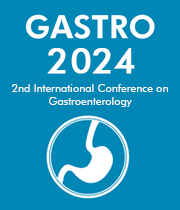Title : Effects of endogenous intoxication on the liver with acute experimental pancreatitis and its correction pathways
Abstract:
One of the main features of the project is the development and implementation of the project. It is generally known that the severity of acute pancreatitis is due not only to the nature and degree of damage to the pancreatic cells, but also to the degree of damage to the pancreatic cells but also developing endogenous intoxication syndrome. Endogenous intoxication syndrome causes metabolic disorders and a decrease in the functional activity of natural detoxification systems, in particular, inhibits the monooxygenase detoxifying liver system.
The purpose of the study is to establish the effect of acute pancreatitis on the condition of the monooxygenase liver system.
Materials and research methods:
Experiments were conducted on 50 sexually mature male-free rats with initial body mass of 120-140 g. Acute experimental pancreatitis caused in rats by the P.S.Simovaryan method (1973)Local freezing of pancreatic surface with ethyl chloride . The content of antibodies to liver microsom (anti-Lkm-1) and the content of antibodies to the soluble liver/pancreas antigen (SLA/LP) in the blood serum was determined by immunotherapy analysis (ELISA) using the standard test systems of Demeditec, Germany.
Animal correction was performed by sandostatin - synthetic octapeptide, a natural hormone derivative of somatostatin, intramuscularly injected 0.007 mg/kg body weight for 10 days, and combined application of sandostatin and cytochrome with 0.0.15 mg/kg body weight. The research was conducted on the 7th and 10th days of the experiment.
Discussion of the results:
Many diseases are caused by autoimmune processes, manifested by the formation of antibodies to particular organs. We decided to analyze the level of hepatic-pancreatic antibodies to the cytosolic protein SLA/LP, indicating the presence of liver autoimmune lesion. In the simulation of acute pancreatitis, the antibody content of dissolved liver and pancreatic antigen (anti-SLA/LP) increased by 19 and 33 times the 7th and 10th days of research, compared to intact animals.
In order to study changes in the monooxygenase hepatocyte system, we studied the content of antibodies to liver microsoma - anti-LKMK1. In acute pancreatitis, the anti-LKM1 antibody content increased by 1.6 and 2 times on the 7th and 10th days of testing compared to intact animals. When applying sandostatin to dissolved liver and pancreas antigen, the antibody content decreases by 5.4 and 5.6 times by 7 and 10 days of the study, while when using cytochrome c and sandostatin together, antibodies decreased by 9.6 times in the same period4 and 12 times respectively compared to sick animals.
Liver microsoma antibodies were reduced by 13% and 28.5% on the 7th and 10th day of the study, and antibody levels were reduced by 27.8% and 38% in the same period of time when joint treatment was performed.
Correction of the resulting changes was most effective when hepatoprotectives and cytochrome c were used together. Improved energy exchange leads to improved liver detoxification and restoration of antioxidant performance.



